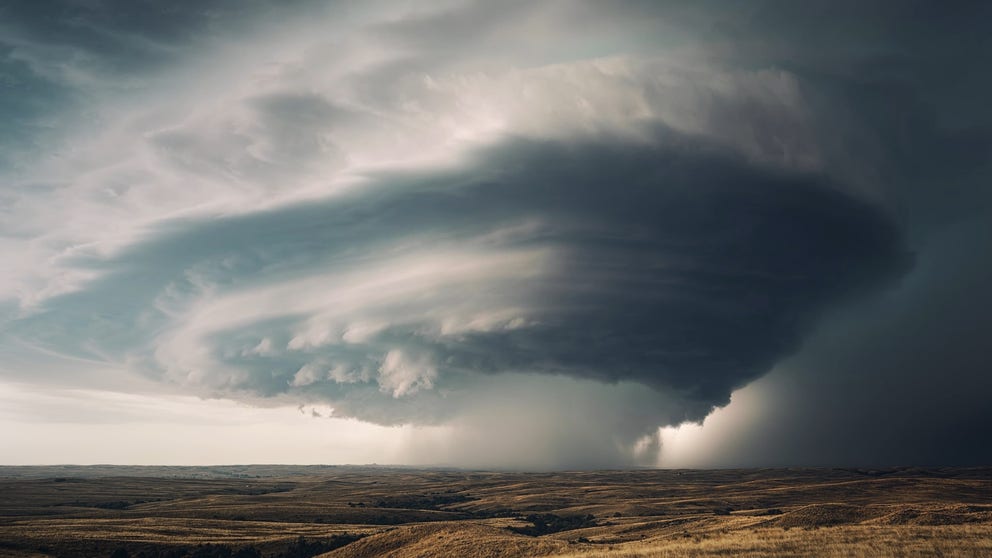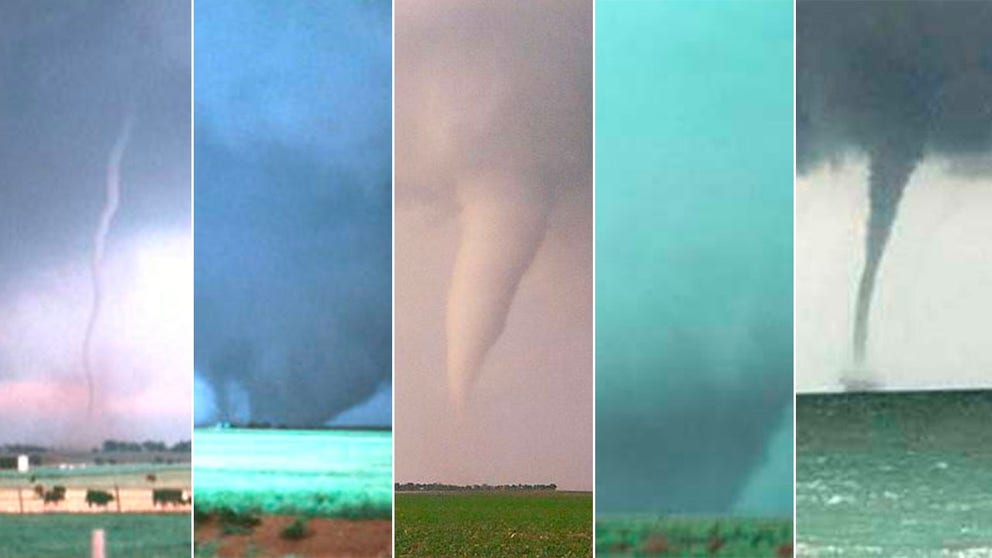How long do tornadoes last and how do they form?
Weaker tornadoes typically only last a few minutes, but stronger tornadoes might remain on the ground for an hour or longer.
How do tornadoes form?
Regardless of their strength and how long they stay on the ground, all tornadoes require the same atmospheric conditions in order to form.
Although every tornado is different and some are on the ground longer than others, there are specific atmospheric conditions required for a twister to develop.
More than two-thirds of tornadoes are rated EF-0 or EF-1 on the Enhanced Fujita Scale with winds of 110 mph or lower, and they typically only last a few minutes before dissipating. However, nearly one-third of twisters are rated EF-2 or EF-3, packing winds of up to 165 mph, and can remain on the ground for 20 minutes or more.
The rarest but most violent tornadoes of EF-4 and EF-5 intensity can contain winds of 200 mph or higher and may have a lifecycle of an hour or longer.
HOW ARE TORNADOES RATED? THE ENHANCED FUJITA SCALE EXPLAINED
But one thing all tornadoes have in common, regardless of their strength and how long they're on the ground, is the science behind their formation. The lifecycle of a tornado can be explained in a series of four stages, and we’ll discuss each one below.
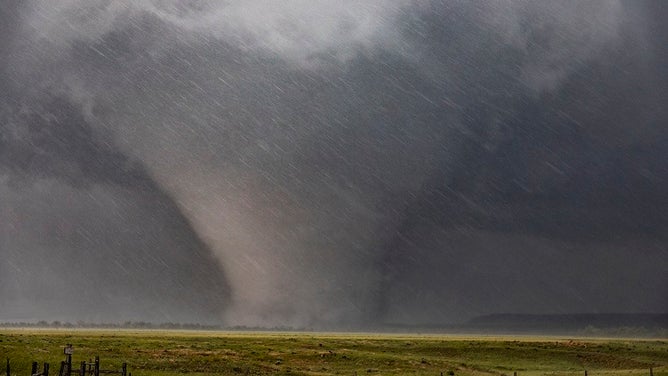
A tornado is photographed in Harding County, South Dakota, on the evening of June 28, 2018.
(Roger Hill via National Weather Service/Rapid City, South Dakota)
Stage 1: Storm development
As the ground is heated up by the sun, the air just above the ground also heats up. This causes some air parcels to become warmer than their surrounding environment, resulting in an unstable atmosphere.
Those air parcels will then rise because of the instability and lead to the development of shallow cumulus clouds, which might not look threatening at first.
However, those cumulus clouds can grow to much greater depths if the atmosphere is very unstable – with temperatures in the surrounding environment decreasing rapidly with height – because the warm air parcels will continue to rise higher into the atmosphere.
6 TYPES OF CLOUDS YOU MIGHT SEE DURING SEVERE STORMS
These currents of ascending air are called updrafts, and they can help transform the cumulus cloud into a cumulonimbus cloud, which produces thunder and lightning.
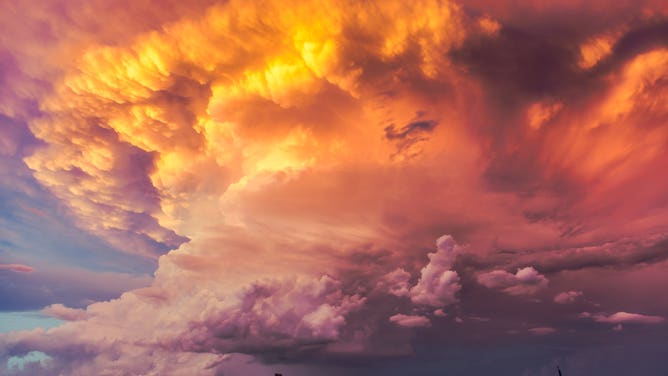
(Photo provided by NOAA)
Stage 2: Storm organization
If Stage 1 takes place in an environment with winds increasing in strength as you go higher into the atmosphere – known as vertical wind shear – the thunderstorm updraft might begin to rotate. This is because the strong vertical wind shear creates a horizontal spin in the atmosphere.
The strong updraft into the storm can then tilt this horizontal spinning motion vertical, causing the spin to occur about a vertical axis. Picture the rotation of a merry-go-round at your favorite amusement park.
HERE'S WHERE TORNADOES ARE MOST LIKELY TO OCCUR IN EACH MONTH
Thunderstorms that exhibit persistent and deep rotation are called supercells.
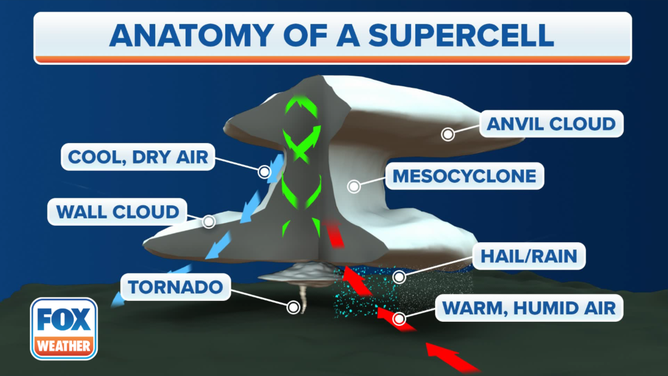
(FOX Weather)
Stage 3: Tornado formation
Supercells contain descending currents of relatively cold, dense air, known as downdrafts. These downdrafts help maintain the rotation while also transferring it downward toward lower altitudes.
The rotation can eventually become so strongly concentrated that a narrow column of violently rotating air develops. This is called a funnel cloud.
If the funnel cloud stretches far enough down that it reaches the ground, it becomes a tornado.
5 types of tornadoes
There are five types of tornadoes that you might see. Here's what you need to know.
According to the United Kingdom’s Met Office, the tornado is visible because of the presence of a condensation funnel, which is a funnel-shaped cloud that forms due to the very low pressure inside the tornado.
Dust and other debris lofted by the twister’s intense winds also help make it visible to us on the ground, the Met Office said.
Stage 4: Tornado dissipation
The cold downdrafts eventually lead to the tornado’s demise, as they will wrap around the twister and cut off its supply of warm air from the updrafts.
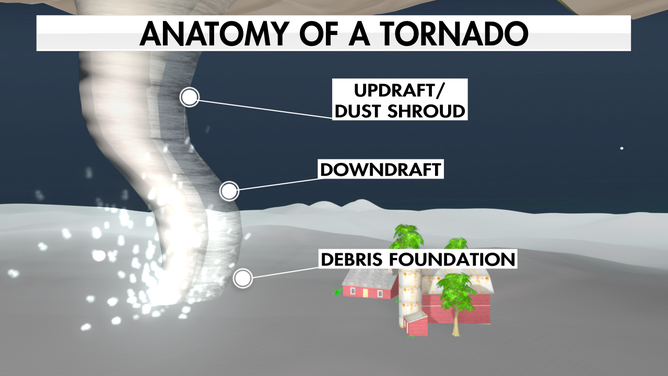
(FOX Weather)
WHERE ARE TORNADOES MOST COMMON?
In this final stage, the tornado typically weakens and narrows, and then dissipates to complete its lifecycle.
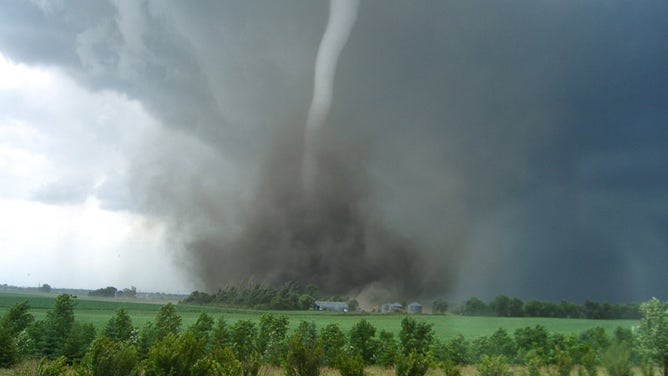
(Photo provided by NOAA)
